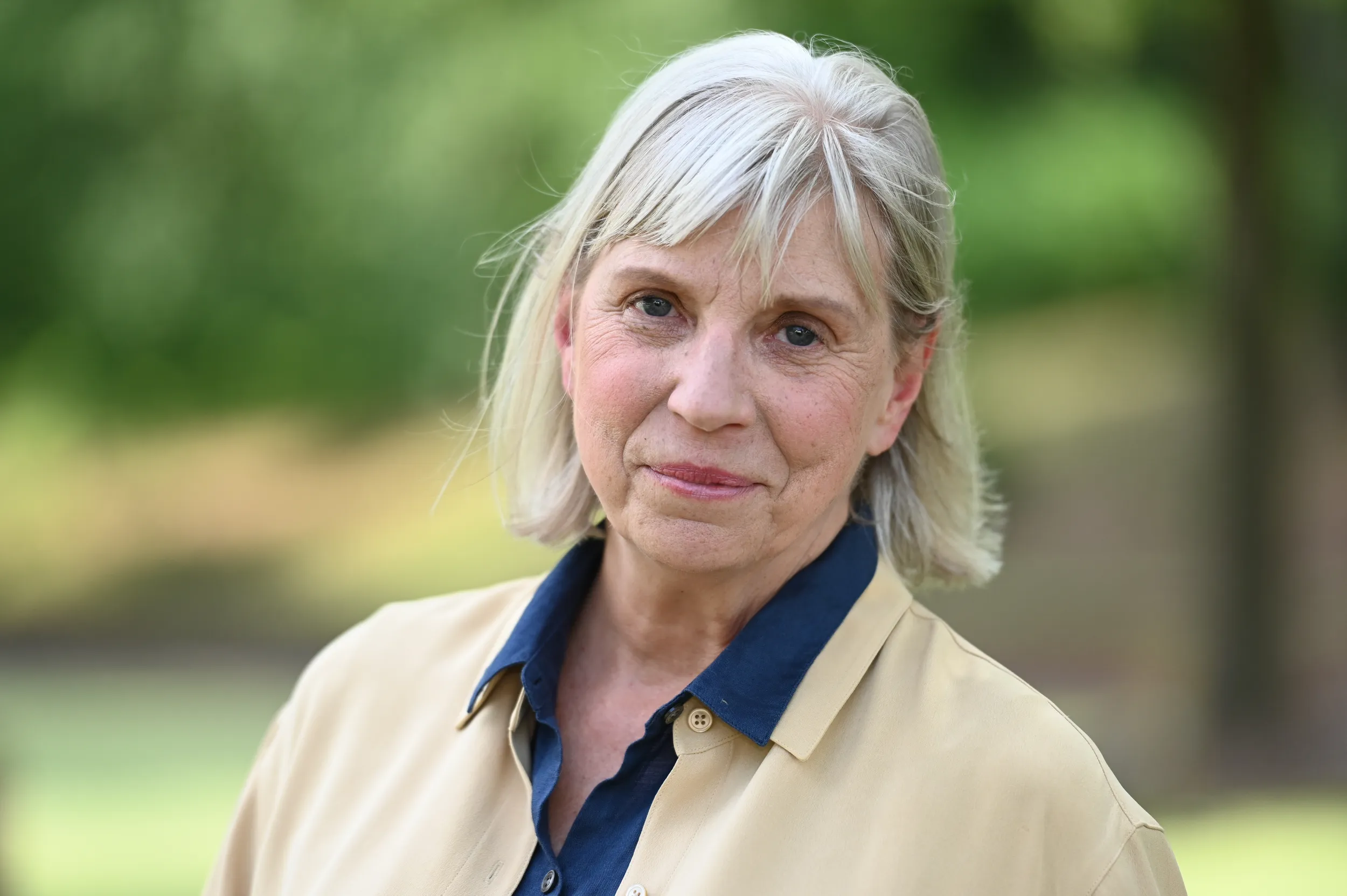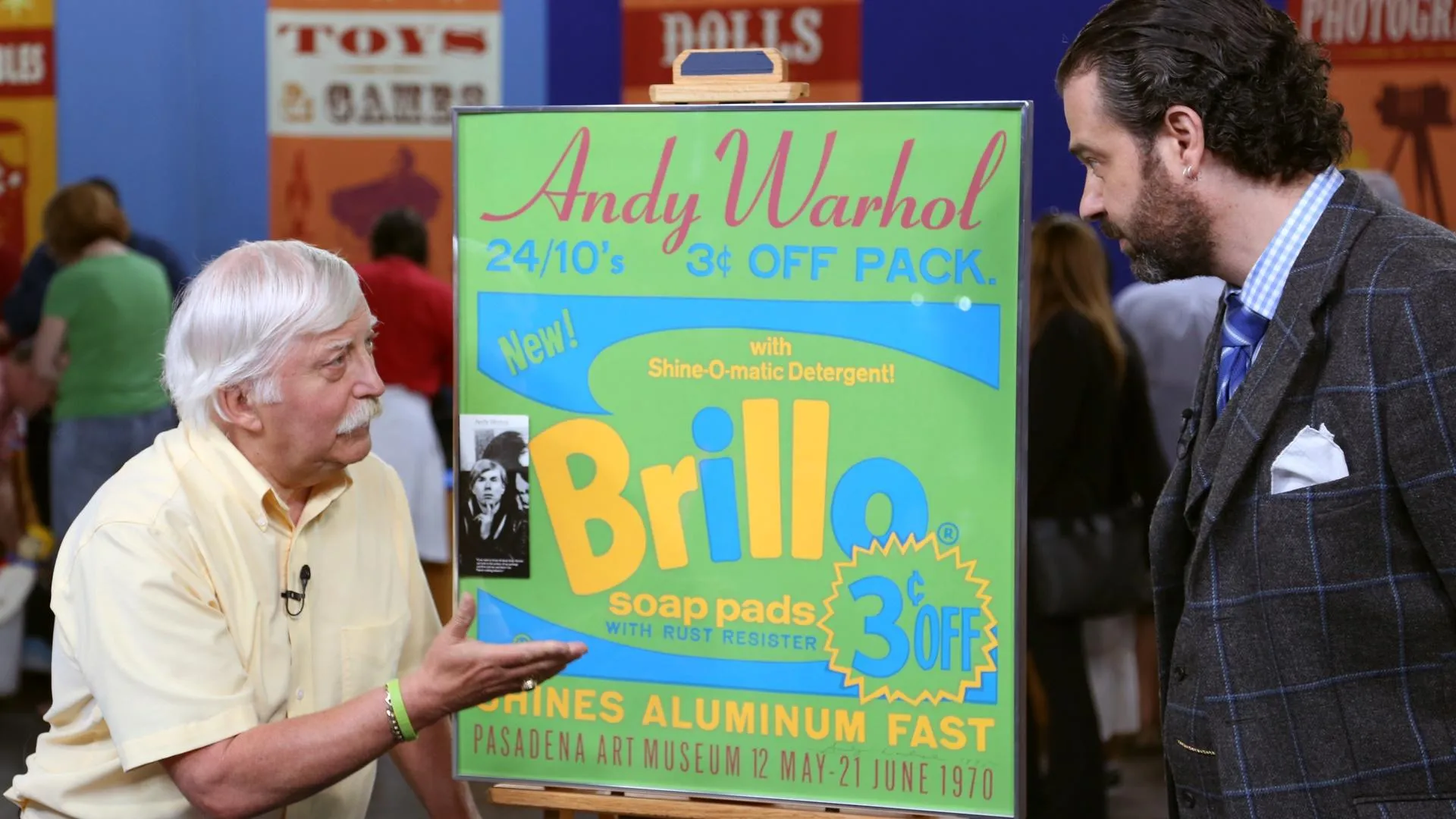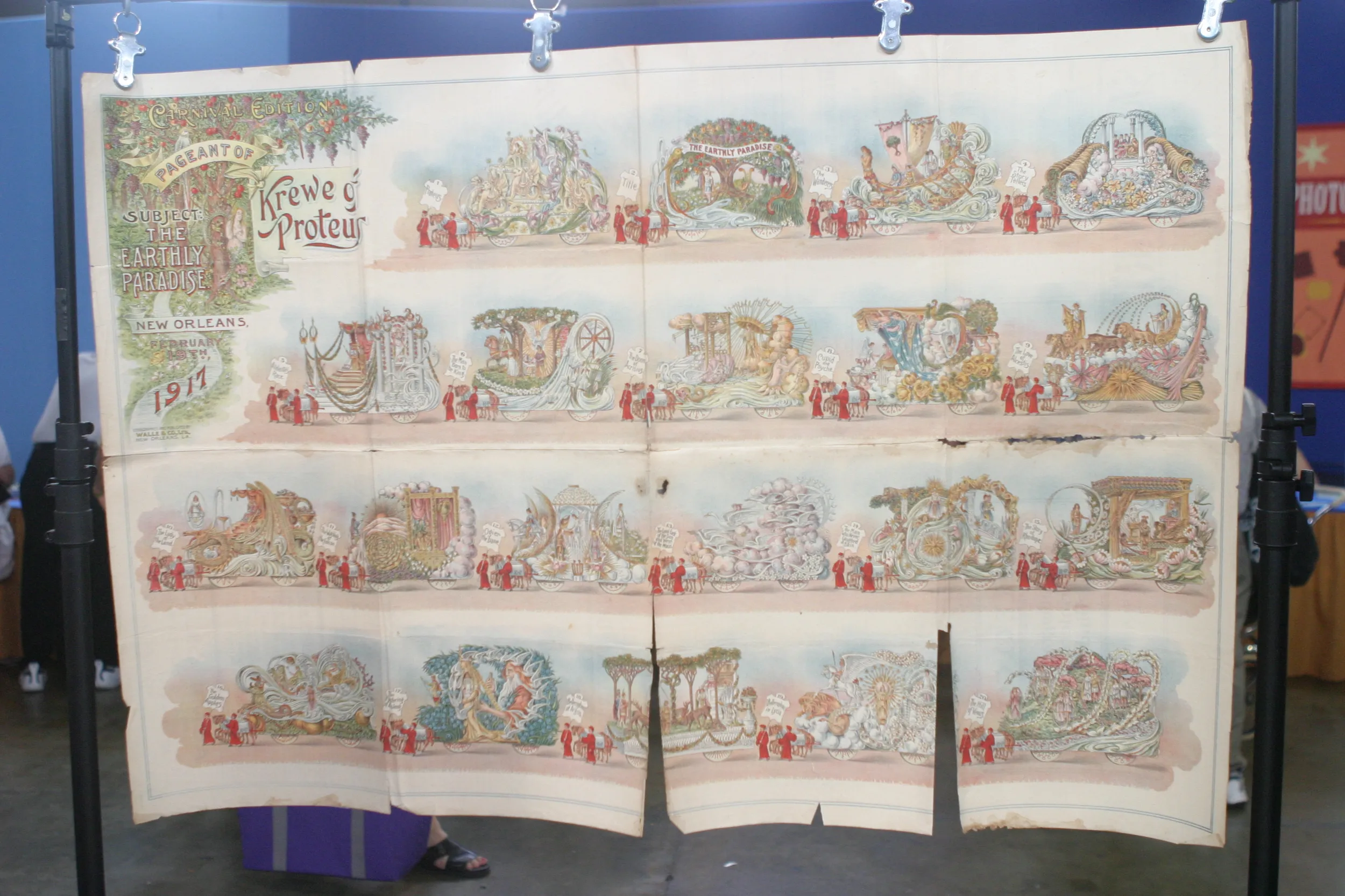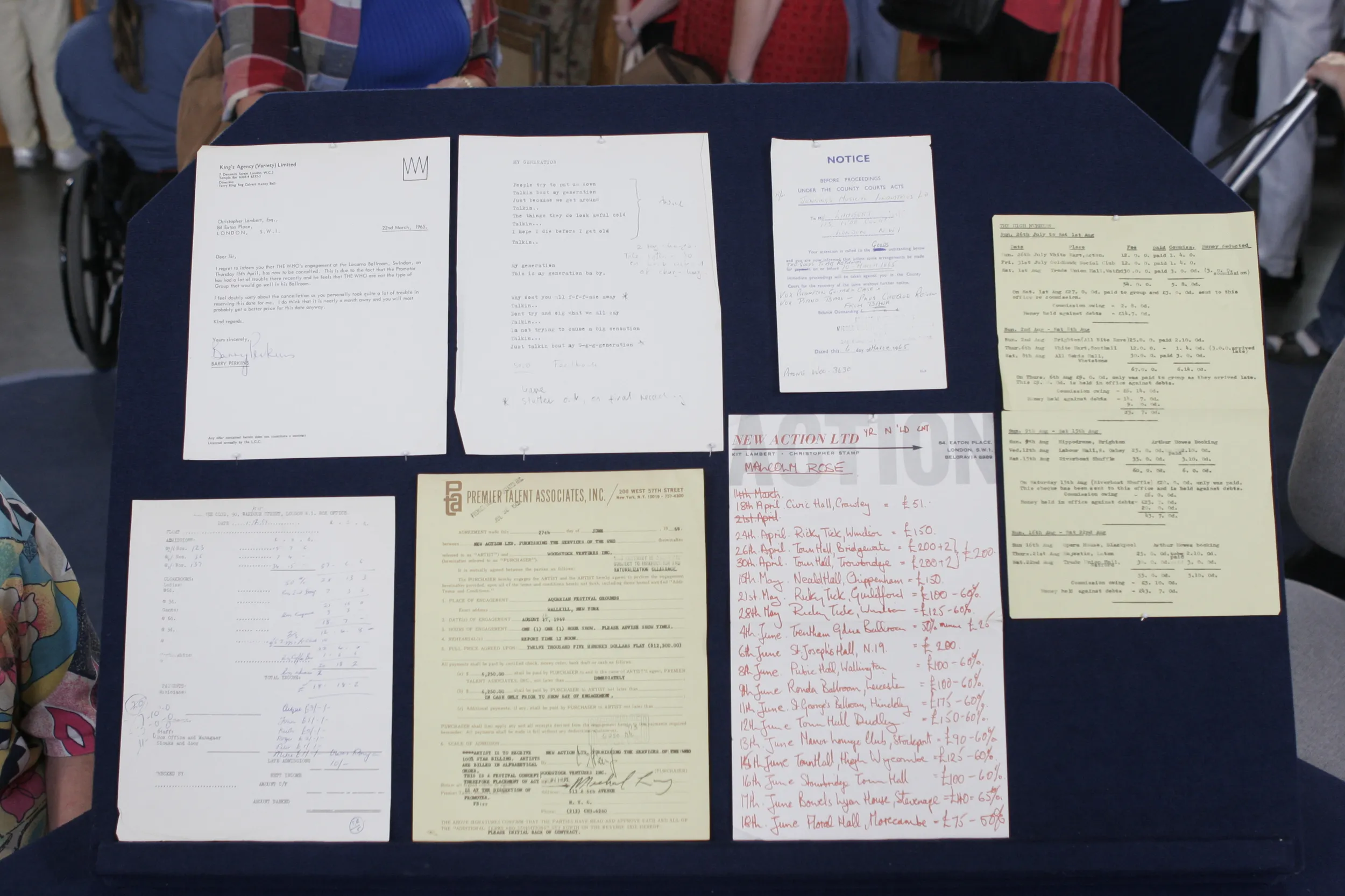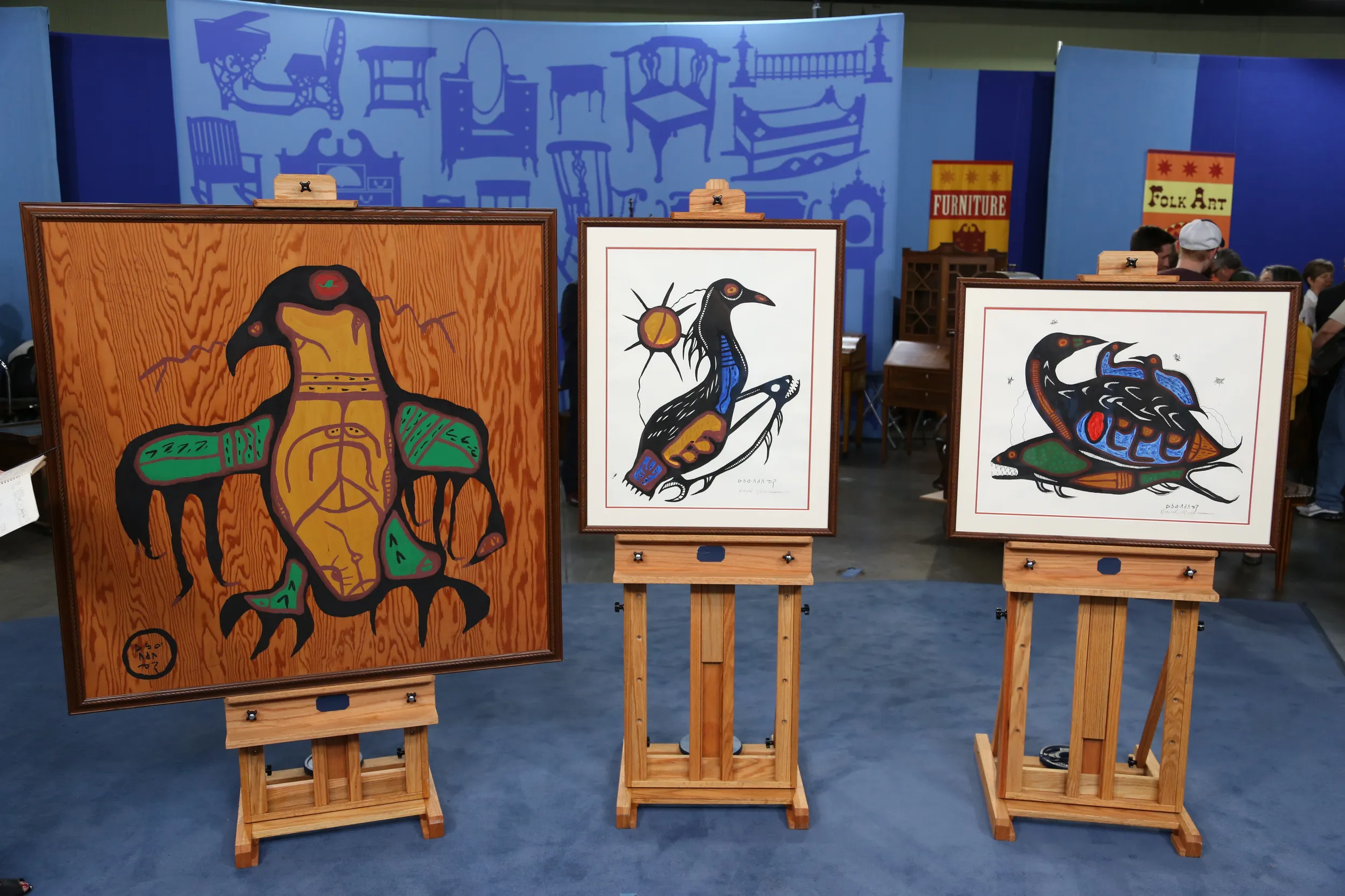GUEST: My dad was driving between Geraldton and Longlac in Ontario, Canada, in a really bad snowstorm, and he saw this gentleman walking on the side of the road, about eight miles from either town, and he didn't signal my father, so my dad drove by and then he got worried and came back and the fellow was lying on the ground, so he picked him up and he took him into the truck, started to warm him up and saw he was an American Indian. He took him back to the reservation in Longlac. When he got there, he asked the people do they know this gentleman, they said yes, and they immediately took him to his home, and then these native ladies came, and they were concerned about warming his hands, and my dad didn't understand that because that's really not the first thing you warm when a person freezes. They were trying to save them because he was an artist. The next day, when he came around, he wanted to paint my father a painting as a gift, as a thank-you. This end painting here, the one on plywood, he didn't have anything to paint on, so my dad went out to the pickup-- he had a four-wheel drive pickup with a cap on it-- and he pulled the shelf out that goes between the two wheel wells, and Mr. Morrisseau used that as his canvas. And he painted his personal totem on it. Apparently, there's a belief that you can't give your totem to anybody outside the tribe, so they did a tribal ceremony to make my dad his blood brother. The painting is inscribed in the upper left hand, "To my blood brother, Geraldton, November 1968." And then he gave my father also five other paintings. These are two of the five.
APPRAISER: Norval Morrisseau was born in Canada in the 1930s and died in 2007. He was one of the first Canadian artists to combine the modern style with traditional aboriginal imagery, so you have this wonderful overlay of lines and abstracted shapes combined with loons and thunderbirds and just great imagery. In terms of the value of the pieces, it's a little difficult, especially with the large one, to put a value on it because it's so special and different from the other work. But he's one of Canada's most important artists. His work is included in many museums across the country and in Canada, and painted in 1968, which was one of the best periods for him. So combining that and just the overall quality, the meshing of the native Canadian imagery and this wonderful modernist style, which is very popular right now, would lead me to believe that retail, the larger piece could sell for between $15,000 and $25,000, and the smaller pieces, the works on paper, between $3,000 and $5,000 each.
GUEST: Well, as my priest always says, an act of kindness is rewarded many times.
APPRAISER: I think he's right.
